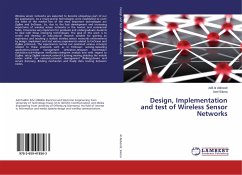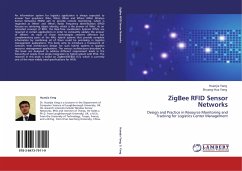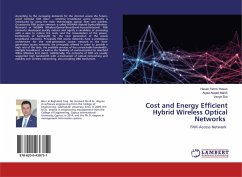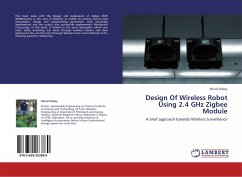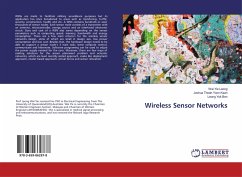
Wireless Sensor Networks
Versandkostenfrei!
Versandfertig in 6-10 Tagen
26,99 €
inkl. MwSt.

PAYBACK Punkte
13 °P sammeln!
WSNs are made to facilitate military surveillance purposes but its application has since broadened to areas such as monitoring, traffic, security, construction, health and etc. A WSN contains hundreds or even thousands of sensor nodes. Each sensor node consists of a transceiver with an antenna, microcontroller, energy source and an interfaced electronic circuit. Sizes and cost of a WSN also varies depending on the sensor parameters such as computing speed, memory, bandwidth and energy consumption. There are a few main criteria's for the wireless sensor networks design, some of which are small ...
WSNs are made to facilitate military surveillance purposes but its application has since broadened to areas such as monitoring, traffic, security, construction, health and etc. A WSN contains hundreds or even thousands of sensor nodes. Each sensor node consists of a transceiver with an antenna, microcontroller, energy source and an interfaced electronic circuit. Sizes and cost of a WSN also varies depending on the sensor parameters such as computing speed, memory, bandwidth and energy consumption. There are a few main criteria's for the wireless sensor networks design, some of which are small in design size, low power consumption and low cost. Besides that, the hardware design needs to be able to support a sensor node's 3 main task; sense compute control, communicate and hibernate. Software programing can be used to adjust the power supply needed for the core. Moreover, there are few ways of existing solutions for the sensor placement problem and actuator networks, which are least recently visited approach, snake like deployment approach, cluster based approach, virtual forces and sensor relocation.



